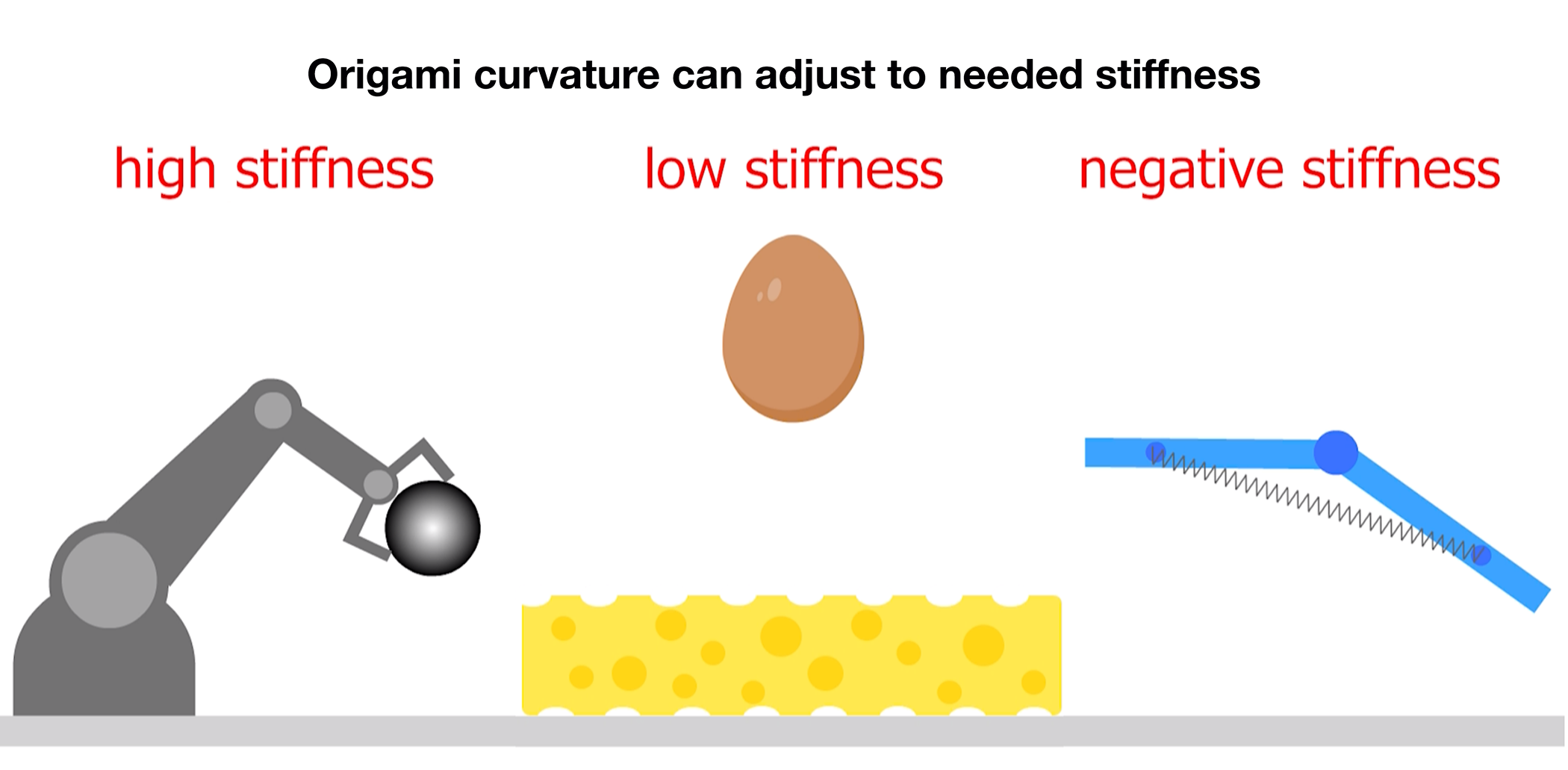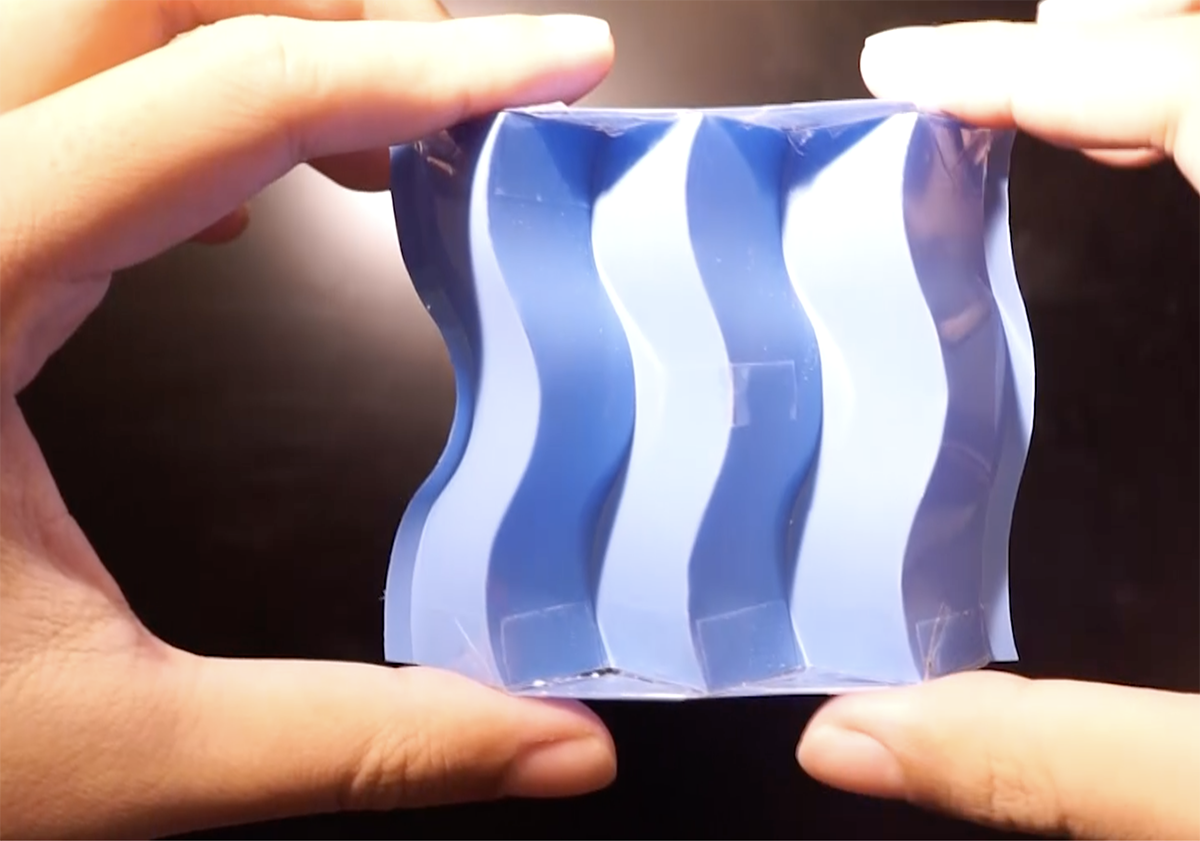New research that employs curved origami structures has dramatic implications in the development of robotics going forward, providing tunable flexibility — the ability to adjust stiffness based on function — that historically has been difficult to achieve using simple design.
“The incorporation of curved origami structures into robotic design provides a remarkable possibility in tunable flexibility, or stiffness, as its complementary concept,” explained Hanqing Jiang, a mechanical engineering professor at Arizona State University.
“High flexibility, or low stiffness, is comparable to the soft landing navigated by a cat. Low flexibility, or high stiffness, is similar to executing of a hard jump in a pair of stiff boots,” he said.
Jiang is the lead author of a paper, “In Situ Stiffness Manipulation Using Elegant Curved Origami,” published this week in Science Advances. “Curved Origami can add both strength and catlike flexibility to robotic actions,” he said.
Jiang also compared employing curved origami to the operational differences between sporty cars sought by drivers who want to feel the rigidity of the road and vehicles desired by those who seek a comfortable ride that alleviates jarring movements.
“Similar to switching between a sporty-car mode to a comfortable-ride mode, these curved origami structures will simultaneously offer a capability to on-demand switch between soft and hard modes depending on how the robots interact with the environment,” he said.
Robotics requires a variety of stiffness modes: high rigidity is necessary for lifting weights; high flexibility is needed for impact absorption; and negative stiffness, or the ability to quickly release stored energy like a spring, is needed for sprint.

Traditionally, the mechanics of accommodating rigidity variances can be bulky with nominal range, whereas curved origami can compactly support an expanded stiffness scale with on-demand flexibility. The structures covered in Jiang and team’s research combine the folding energy at the origami creases with the bending of the panel, tuned by switching among multiple curved creases between two points.
Curved origami enables a single robot to accomplish a variety of movements. A pneumatic, swimming robot developed by the team can accomplish a range of nine different movements, including fast, medium, slow, linear and rotational movements, by simply adjusting which creases are used.
In addition to applications for robotics, the curved origami research principles are also relevant for the design of mechanical metamaterials in the fields of electromagnetics, automobile and aerospace components, and biomedical devices.
“The beauty of this work is that the design of curved origami is very similar, just by changing the straight creases to curved creases, and each curved crease corresponds to a particular flexibility,” Jiang said.

The research was funded by the Mechanics of Materials and Structures program of the National Science Foundation. Authors contributing to the paper are Jiang, Zirui Zhai and Lingling Wu from ASU's School for Engineering, Matter, Transport and Energy, and Yong Wang and Ken Lin from the Department of Engineering Mechanics at Zhejiang University, China.
Images and videos by Zirui Zhai/Arizona State University
More Science and technology

Student sees how AI can assist people with vision loss
Partial vision loss can make life challenging for more than 6 million Americans. People with visual disabilities that can’t be remedied with glasses or contacts can sometimes struggle to safely…

Newly identified viruses found in dolphins
In a new study, researchers from Arizona State University together with national and international collaborators have identified anelloviruses in dolphins for the first time. Anelloviruses are a…
ASU Interplanetary Lab celebrates 5 years of success
Five years ago, an Arizona State University student came up with the idea of creating a special satellite in what was then the newly built Interplanetary Laboratory. The idea was to design…
